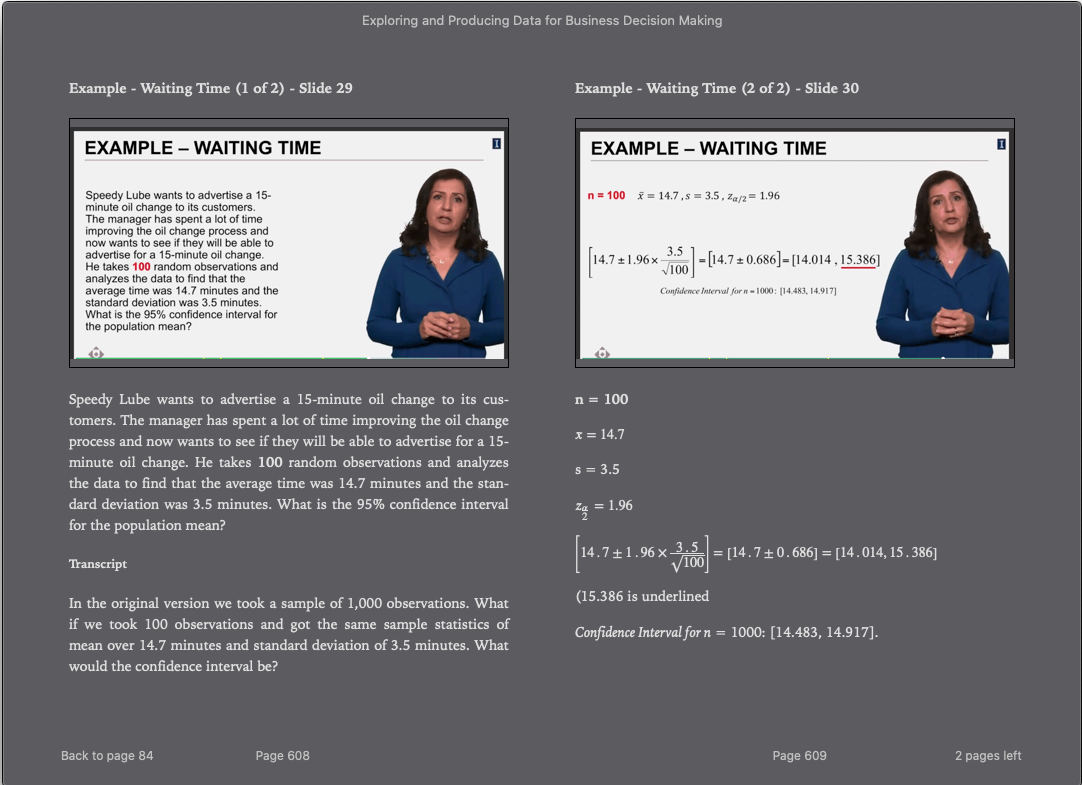These online graduate programs draw from over eighty countries emphasizing the need for a universal design experience, both sensory, cognitive, and physical disabilities, as well as support for non-native English students. Gies’ work with DRES and other institutions, we have found many shortcomings in the Coursera platform to deliver instruction that lives within our goals for a universal teaching and learning experience. Because of this, we pursued our own path to deliver our media content using ePub digital books.
The ePub books are created as an alternative method to experience the video content for a course. Rather than depend on a player to deliver the video content with the requisite transcript, captions, extended description, and navigation, the ePub repacks that information into structured form easily consumed with the ePub reader that suits the student. All information sits at the “surface” of the page rather than “behind the scenes” as would be the case for ALT-TEXT. Universal access to all of the content is possible without assistive technologies.
Each “page” of the ePub contains the title of the slide or visual scene (as an navigation landmark as well), a link to a video player for that portion of the video, an image captured from the video, semantically structure text recreating on-screen words, extended text description of other visual content as a replacement for ALT-TEXT, MathML renderings of any numeric and equation information, copyable tabular data sets that support current scene, downloadable documents such as spreadsheets that allow for practice with the topic, and lastly the transcript. This cycle of alternate video content repeats throughout the course of each ePub.

The ePubs are continually in production as the course catalog grows at Gies. A five-person student team, managed by a full-time instructional designer, work tirelessly to create the books. Like any UDL/UDI work, the job is never finished but the important part is the development of a sustainable workflow to meet the needs of an expanding content library.
